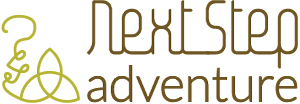Turn the Radio On
Well, actually learn about social marketing. (Our radio show, though short-lived was a lot of fun, and even though it’s offline now, there’s some good stuff in this post) So read on…
Ben Stone gave us a lovely compliment, “Two Baby Boomers (three actually counting our producer Anne Larson) doing an Internet radio show gives me hope.” Ben owns RPO Consulting, and though he considers himself an HR guy (I know), he finds himself working more and more on helping people use social media effectively. The nuggets I’m still chewing on (along with my GORP) are these–
Facebook and Twitter are about relationships, not eyeballs.
When you use social media, imagine yourself traveling in another country; you have to learn the customs, the geography. You have to try the food and explore the culture to get the most from the experience.
I’ll keep those thoughts in mind as I develop my blog, content on my YouTube account and figure out how to make Twitter work for me and Next Step. We also discussed generational differences in how we use social media. Three generations of entrepreneurs were represented on the show–Ben Stone (Generation X), Talia Leman (Gen Y), Bruce Lehnertz and me (Boomers).
Talia is a sophomore in high school, but has accomplished more already than I ever hope to. Well, I can hope! About six years ago, she was inspired to start the wildly successful organization RandomKid.org after she organized a trick-or-treat event to raise money to help victims of a storm in Ghana. That experience showed her the power of young people, and now she is unleashing it on the world . The global (20 countries with about 12 million? members) uses the Internet to provide youth the opportunity to safely collaborate with kids at other schools, and with people on the ground who work on behalf of their fundraising efforts, and help them achieve their goals.
Collaboration again emerges a high priority for entrepreneurs in all kinds of endeavors, whether agriculture and retail or cooking. Our conversation with Talia and Ben cemented my impression of the younger generations–they will find and create and enact solutions for the many problems that confront us. That gives me hope.










